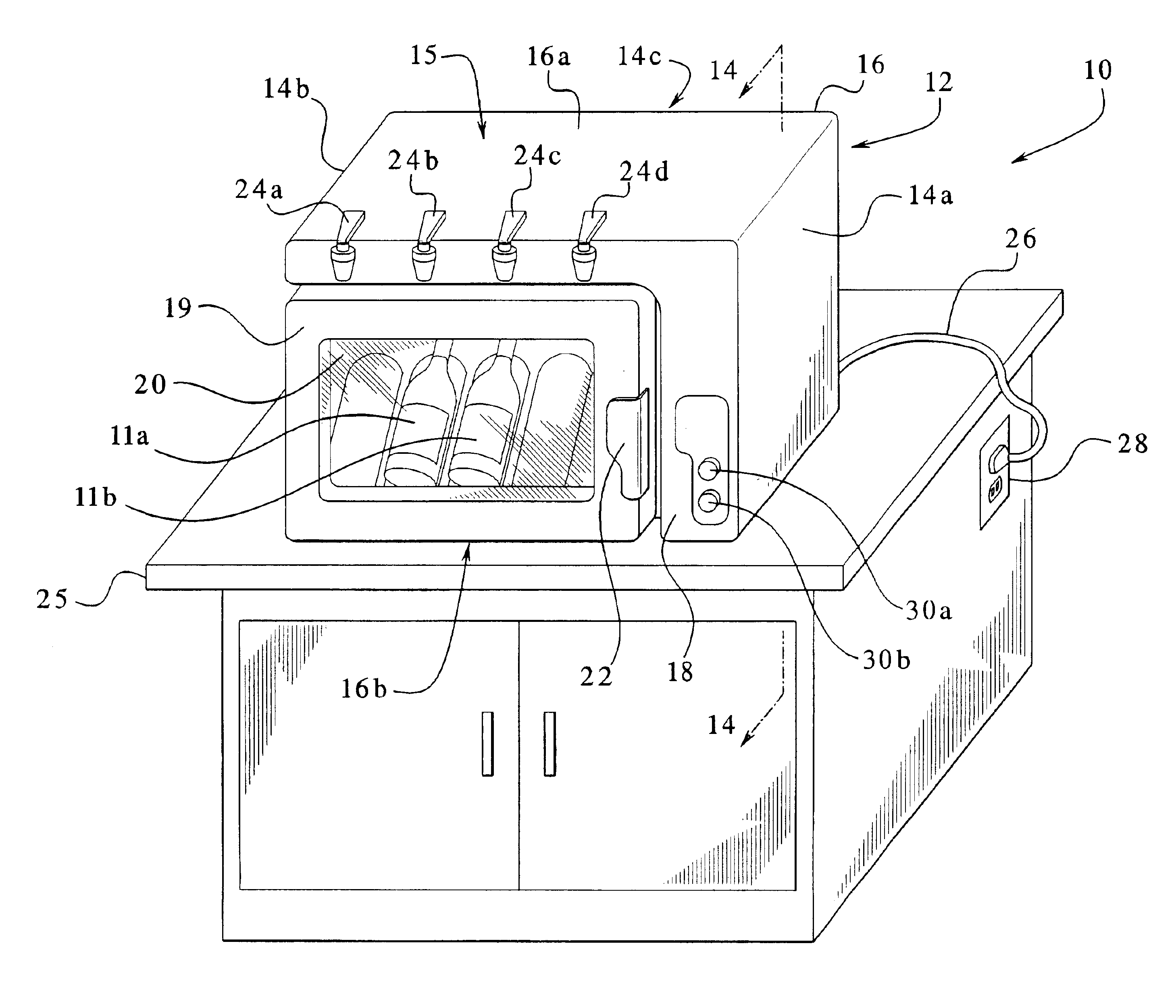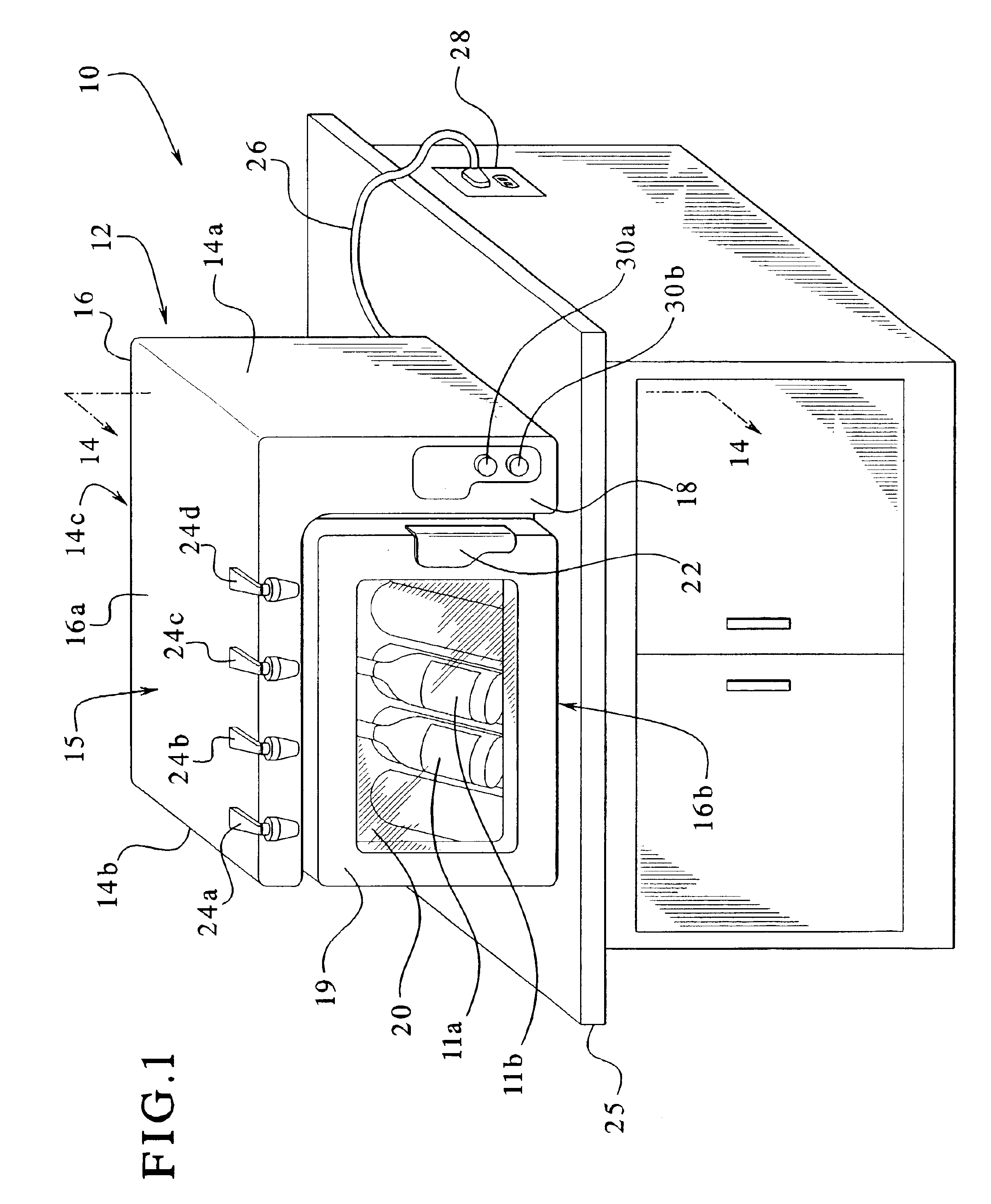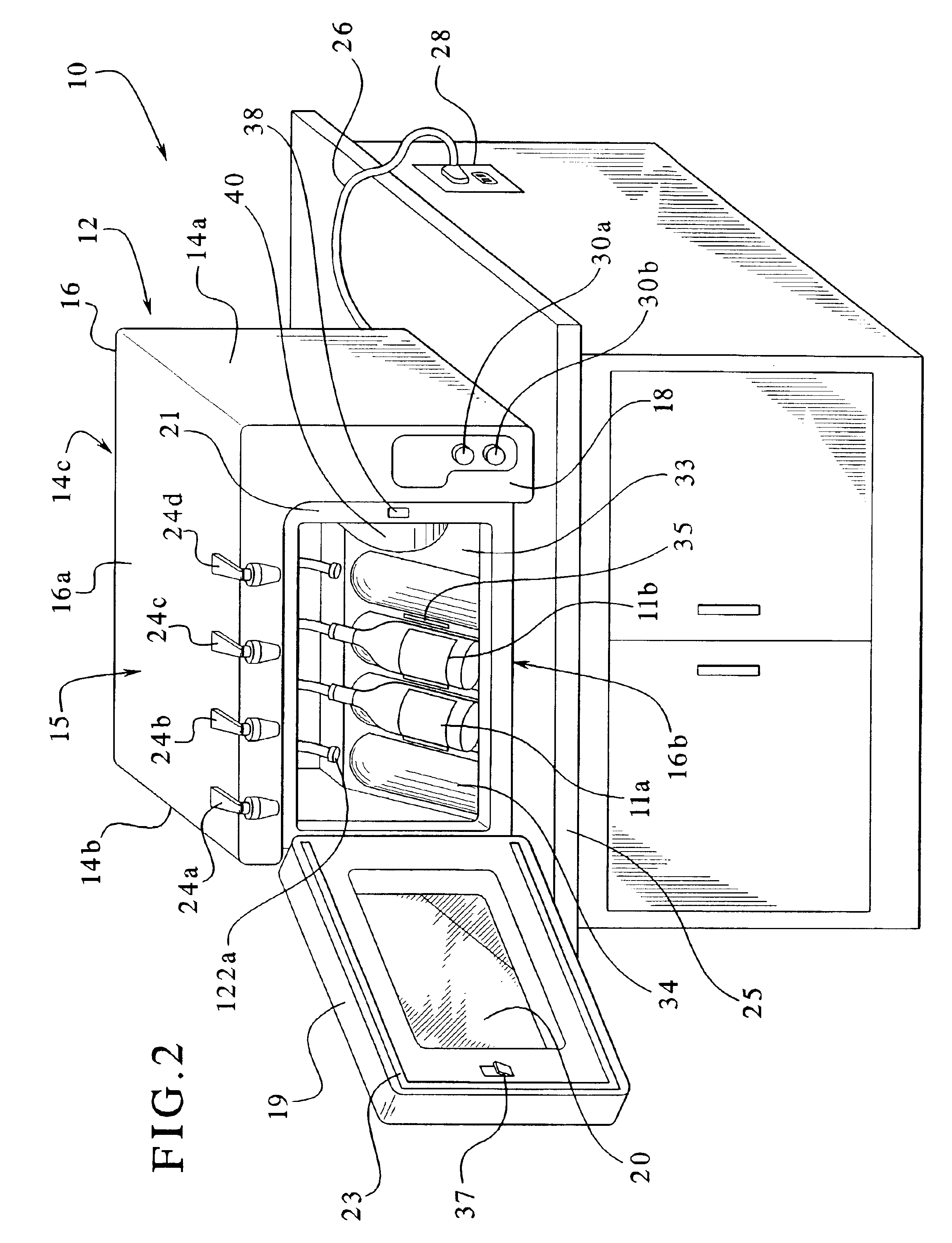Wine or champagne preservation and dispensing apparatus
a technology for preserving and dispensing apparatuses, applied in the direction of lighting and heating apparatus, domestic cooling apparatus, separation processes, etc., can solve the problems of affecting the quality of wine or champagne remaining in the bottle, and affecting the useful or taste of wine. the end of the useful or taste life of win
- Summary
- Abstract
- Description
- Claims
- Application Information
AI Technical Summary
Benefits of technology
Problems solved by technology
Method used
Image
Examples
Embodiment Construction
[0076]People who drink wine or champagne may only drink one glass, part of a bottle or some other quantity after opening a bottle. The wine or champagne preservation and dispensing apparatus of the present invention operates to preserve the flavor of the remaining quantity of wine or champagne in an opened bottle for a substantial period of time and also operates to dispense wine or champagne on an as needed basis. Referring now to FIGS. 1 through 4, the wine or champagne preservation and dispensing apparatus of one embodiment of the present invention, generally designated by the numeral 10, is alternatively referred to herein as the preservation apparatus, the dispensing apparatus or the apparatus. It should be appreciated that while the present invention is illustrated and discussed herein relative to an apparatus suitable for holding four bottles of wine or champagne, the present invention contemplates one or more bottles of wine or champagne. It should also be appreciated that w...
PUM
| Property | Measurement | Unit |
|---|---|---|
| Pressure | aaaaa | aaaaa |
| Pressure | aaaaa | aaaaa |
| Pressure | aaaaa | aaaaa |
Abstract
Description
Claims
Application Information
 Login to View More
Login to View More - R&D
- Intellectual Property
- Life Sciences
- Materials
- Tech Scout
- Unparalleled Data Quality
- Higher Quality Content
- 60% Fewer Hallucinations
Browse by: Latest US Patents, China's latest patents, Technical Efficacy Thesaurus, Application Domain, Technology Topic, Popular Technical Reports.
© 2025 PatSnap. All rights reserved.Legal|Privacy policy|Modern Slavery Act Transparency Statement|Sitemap|About US| Contact US: help@patsnap.com



